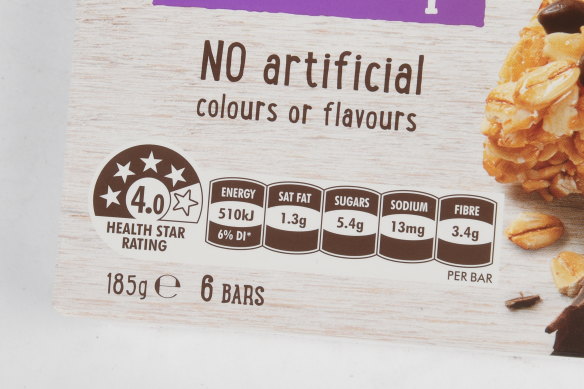A five-star rating means it’s healthy, right? It’s not that simple
Star symbols are common on supermarket food products, from 0.5 to five full stars. What do they really mean? And how much should you rely on them?
How do you make healthy food choices? Do you scan the nutritional panel? Or the ingredient list? Perhaps you try and buy snacks from the health food section of the supermarket, or maybe you use the Health Star Rating system.
Since its inception in 2014, the nationally recognised food classification system has been frequently criticised, both for its poor adoption by food companies, and for the underlying nutritional criteria that determine each food’s rating.
So how does the Health Star Rating work, how should you interpret it and how does it need to be changed to turn it into a valid public health tool?

How are star ratings calculated?
A product’s Health Star Rating is determined via a system in which foods are awarded points for positive nutritional components, while points are removed for less desirable ones. For example, foods are given points for dietary fibre and fruit and vegetable content, while points are lost for sugars, saturated fat and excessive calories. The result is a rating from 0.5 to five.
The goal of the system is to allow consumers to compare different products within an individual food category, for example cereals or crackers, rather than comparing all foods to each other.
What do the stars mean?
Theoretically, the higher the number of stars a product is rated with, the stronger the product is nutritionally, while lower star ratings are intended to remind consumers that these products are not the best choices nutritionally.
While there are a handful of products that consistently rate four to five stars, and plenty that sit at just one or two, such as confectionery or biscuits, there are also plenty of processed foods that sit in the middle. While this rating may suggest some positive nutritional attributes, there are also plenty of negatives, leaving the consumer with a vague overall picture.

What are the nutritional concerns with the system?
One key issue with the current rating system is that naturally occurring sugars and added sugars are not differentiated. This means that largely whole foods such as yoghurt can earn fewer stars than a product that is artificially sweetened, when it could be argued the natural yoghurt is a much better option nutritionally. The current system does not penalise added sugars, which would certainly affect the rankings of many popular breakfast cereals and snacks.
The second fundamental flaw is that the equation frequently results in ultra-processed foods receiving a high rating. As the basic calculations that determine each food’s rating are nutrient-based, there is no consideration of quality of ingredients. This has resulted in the food industry using processed ingredients to bulk up the fibre and protein content of foods to improve their ratings.
This means there are a growing number of foods including wraps, snack bars and protein-based foods that may have a high number of stars, but also an ingredient list that is a mile long. It also means that whole foods that naturally contain fat, such as extra virgin olive oil, are penalised for the baseline nutritional make-up, rather than being given credit for the nutritional benefits whole foods offer.
What key changes are needed
Currently, it is not compulsory for the food industry to include a Health Star Rating on their products. While some supermarkets are pushing food manufacturers towards mandatory inclusion, until the system requires all packaged and processed foods to carry a star rating, consumers are left in a confused space.
A voluntary approach means that healthier foods often feature a rating, while unhealthy foods skip inclusion. While this may highlight healthier foods overall, it denies consumers the opportunity to make comparisons. Australian data shows that fewer than 40 per cent of supermarket products currently feature a Health Star Rating.
As public health researcher Dr Alexandra Jones from The George Institute of Global Health says: “The main issue with stars is their voluntary nature, which provides marketing benefit to manufacturers but restricts their use as a public health tool. We need stars to be made mandatory sooner rather than later to ensure they work for consumers, not just food companies.”
The take-home message
When comparing packaged foods in supermarkets, the higher the number of health stars on a product, the healthier the food should be. But until the Health Star Rating system is made compulsory, and the equation is tweaked to give extra points for whole, natural, minimally processed foods, the ingredient list of a product is going to give you much better insight into how healthy any given food product really is.
The best recipes from Australia's leading chefs straight to your inbox.
Sign up